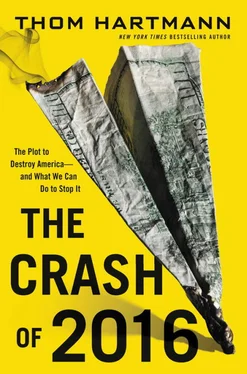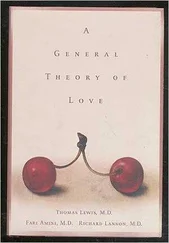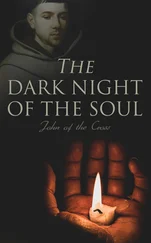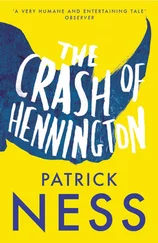When Field agreed with this argument that the Fourteenth Amendment freed the corporations along with the slaves in a Ninth Circuit Court case, which he then sent to the Supreme Court (on which he also sat), in 1873, Justice Samuel F. Miller minced no words in chastising corporations for trying to claim the rights of human beings.
The Fourteenth Amendment’s “one pervading purpose,” he wrote in the majority opinion, “was the freedom of the slave race, the security and firm establishment of that freedom, and the protection of the newly-made freeman and citizen from the oppression of those who had formerly exercised unlimited dominion over him.”
The railroads, however, had a lot of money to pay for lawyers, and railroad lawyer S. W. Sanderson had the reputation of being a pit bull in the courtroom. Undeterred, the railroads again and again argued their corporations-are-persons position all the way to the Supreme Court. The peak year for their legal assault was 1877, with four different cases reaching the Supreme Court in which the railroads argued that governments could not regulate their fees or activities or tax them in differing ways because governments can’t interfere to such an extent in the lives of “persons” and because different laws and taxes in different states and counties represented illegal discrimination against the persons of the railroads under the Fourteenth Amendment.
In 1882 the railroads’ attorneys floated the claim in a Supreme Court pleading that when the Fourteenth Amendment was drafted, “a journal of the joint Congressional Committee which framed the amendment, secret and undisclosed up to that date, indicated the committee’s desire to protect corporations by the use of the word ‘person.’”
It was a complete fabrication, and they lost the 1882 case: Nobody took the “secret-journal theory” seriously except Justice Field, who had ruled in the railroad’s favor in the Ninth Circuit Court.
Nonetheless, the railroad corporations were persistent, and in future cases the railroad attorneys were unable to produce or even prove legislative reference to the secret journal of the congressional committee.
In 1886, they received another chance while fighting another lawsuit for nonpayment of taxes from Santa Clara County, California. As usual, Justice Field had ruled in the railroads’ favor, suggesting in his Ninth Circuit Court ruling that they were “persons” suffering unequal justice because different counties used different methods to compute the property taxes the railroad should pay.
From there it went to the Supreme Court, where the railroad’s attorney, Sanderson, confronted an up-and-coming lawyer who would become internationally famous three decades later for his defense in a notorious murder case (the case was made into the movie The Girl in the Red Velvet Swing , starring Ray Milland). Delphin Delmas, while physically unimposing and certainly not the bear of a man Sanderson was, was one of the most brilliant orators of his day.
Delphin Delmas v . Corporate Personhood
In his pleadings before the Supreme Court in the Santa Clara County v. Southern Pacific Railroad case, Delmas said: “The defendant has been at pains to show that corporations are persons, and that being such they are entitled to the protection of the Fourteenth Amendment… The question is, Does that amendment place corporations on a footing of equality with individuals?”
He then quoted from the bible of legal scholars—the book that the framers of our Constitution had frequently cited and referenced in their deliberations in 1787 in Philadelphia—Sir William Blackstone’s 1765 Commentaries on the Laws of England : “Blackstone says, ‘Persons are divided by the law into either natural persons or artificial. Natural persons are such as the God of nature formed us; artificial are such as are created and devised by human laws for the purposes of society and government, which are called corporations or bodies politic.’”
Delmas then moved from quoting the core authority on law to pleading common sense. If a corporation was a “person” legally, why couldn’t it make out a will or get married, for example?
“This definition suggests at once that it would seem unnecessary to dwell upon the idea that though a corporation is a ‘person,’ it is not the same kind of person as a human being, and need not, of necessity—nay, in the very nature of things, cannot—enjoy all the rights of such or be governed by the same laws. When the law says, ‘Any person being of sound mind and of the age of discretion may make a will,’ or ‘any person having arrived at the age of majority may marry,’ I presume the most ardent advocate of equality of protection would hardly contend that corporations must enjoy the right of testamentary disposition or of contracting matrimony.”
The entire idea was beyond the pale, Delmas said. “The whole history of the Fourteenth Amendment,” he told the court, “demonstrates beyond dispute that its whole scope and object was to establish equality between men—an attainable result—and not to establish equality between natural and artificial beings—an impossible result.”
The purpose of the Fourteenth Amendment, passed just after the Civil War, was clear, Delmas said. “Its mission was to raise the humble, the down-trodden, and the oppressed to the level of the most exalted upon the broad plane of humanity—to make man the equal of man; but not to make the creature of the State—the bodiless, soulless, and mystic creature called a corporation—the equal of the creature of God.”
He summarized his pleadings before the Supreme Court by saying, “Therefore, I venture to repeat that the Fourteenth Amendment does not command equality between human beings and corporations; that the state need not subject corporations to the same laws which govern natural persons; that it may, without infringing the rule of equality, confer upon corporations rights, privileges, and immunities which are not enjoyed by natural persons; that it may, for the same reasons, impose burdens upon a corporation, in the shape of taxation or otherwise, which are not imposed upon natural persons.”
Delmas had every reason to assume the Court would agree with him—it already had in several similar cases. In an 1873 decision, Justice Samuel F. Miller wrote in the majority opinion that the Fourteenth Amendment’s “one pervading purpose was the freedom of the slave race, the security and firm establishment of that freedom, and the protection of the newly-made freeman and citizen from the oppression of those who had formerly exercised unlimited dominion over him.”
And, in fact, the court chose to stay with its previous precedent. It ruled on the tax aspects of the case, but explicitly avoided any decision on whether or not corporations were persons.
“There will be no occasion to consider the grave questions of constitutional law” raised by the railroad, the court ruled in its majority opinion. The case was about property taxes and not personhood, and “As the judgment can be sustained upon this ground, it is not necessary to consider any other questions raised by the pleadings.”
In other words, corporations are not “persons” for purposes of constitutional protections.
While the court had not ruled in Santa Clara that corporations should have rights under the Fourteenth Amendment, which can be easily seen from a reading of the case itself, the clerk of the court had a different idea. John Chandler Bancroft Davis wrote in the decision’s headnote that the chief justice had said that corporations were persons under the Fourteenth Amendment. It was published after the death of the chief justice, and although headnotes have no legal or precedential status, it was grabbed generations later by corporate lawyers to advance their own causes.
Читать дальше












